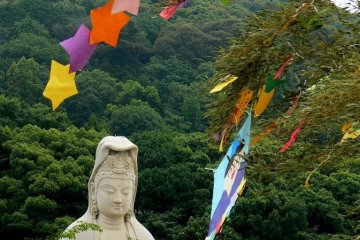
Tanabata di Kuil Kodai-ji 2026
Cathy CawoodHiasan berwarna-warni pada batang-batang bambu di parkiran mobil Kuil Kodai-ji, Tokyo untuk merayakan Festival Tanabata. Terdapat dekorasi buatan tangan, di mana harapan anak-anak tertulis didalamnya.

Kodaiji (高台寺) is located northeast of the Yasaka Hokanji Temple at the foot of the Higashiyama Ryozen Mountains in Kyoto. The official name of the temple is Kodaiji-Jushozenji Temple. In 1606, the temple of Kita-no-Mandokoro was dedicated in memory of her late husband. Kita-no-Mandokoro was also known as nene. The Kaisando (Founder's Hall), Otama-ya (Sanctuary), Kasatei (Tea House), Shiguretei (Tea House), Omotetmon (Gate to the Sanctuary), and Kangetsudai (Moon Viewing Pavilion) are designated as important cultural assets in Japan.
The temple garden is said to have been designed by the landscape gardener Kobori Enshu (1579-1647). The Japanese government has designated the garden as a historic site and a place of scenic beauty.
The interior of the main building was originally painted with lacquer and covered with exquisite gold decorations. However, the current building was rebuilt in 1912 after several fires. Kodai-ji hosts modern art exhibitions in spring and fall. These are set up in the rock garden in front of Houjyo and are creatively illuminated at night.
From Hankyu Kawaramachi Station or Keihan Shijo Station, take city bus 207 and get off at Higashiyama Yasui. Kodaiji Shrine is a 7-minute walk from there. From JR Kyoto Station or Kintetsu Kyoto Station, take city bus 206 (Higashiyama direction) and get off at Higashiyama Yasui. Kodaiji Shrine is a 7-minute walk from there. From JR Kyoto Station or Kintetsu Kyoto Station, the shrine is a 15-minute drive by car or taxi.

Hiasan berwarna-warni pada batang-batang bambu di parkiran mobil Kuil Kodai-ji, Tokyo untuk merayakan Festival Tanabata. Terdapat dekorasi buatan tangan, di mana harapan anak-anak tertulis didalamnya.

Nikmati pemandangan cahaya indah musim gugur di Kodai-ji, Kuil Buddha di kota lama Kyoto.
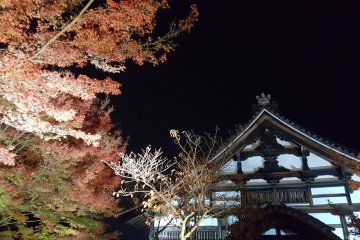

Sakura di kegelapan malam Kyoto adalah pemandangan yang sangat mengesakan. Terdapat banyak pilihan kuil, kastil dan taman untuk hanami di Kyoto, merayakan musim semi sambil menikmati galaksi bunga di atas kepala. Saat malam, sakura pun mengeluarkan cahaya ajaib dibantu dengan pencahayaan di tempat hanami. Inilah daftar 7 keajaiban Kyoto setelah gelap.

Hotel nyaman dengan fasilitas mandi spa di kamar dan sarapan gratis, berlokasi di pusat Kyoto

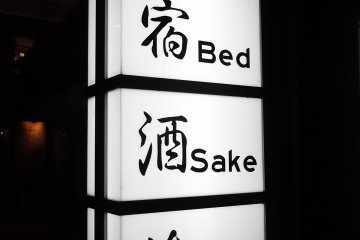
Di bekas ibukota Jepang di Kyoto, Jam Hostel Kyoto Gion adalah hostel ramah untuk backpackers, lokasinya pusat dan nyaman dalam hal transportasi, jalan-jalan, belanja dan kehidupan malam.
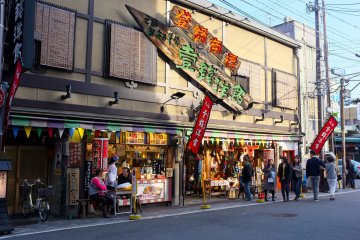
Kyoto terkenal dengan banyak hal. Tetapi saat berbicara makanan, Issen Yoshoku salah satu makanan yang direkomendasikan untuk tidak dilewatkan.
![Museum Udon, Kyoto [Tutup] Museum Udon, Kyoto [Tutup]](https://a2.cdn.japantravel.com/photo/16830-99298/360x240!/kyoto-the-udon-museum-kyoto-99298.jpg)
Mengenal dan mencicipi semua jenis udon Jepang di Museum Udon di Kyoto

Masakan barat 'MIKAKU', Gion Shirakawa, Kyoto; Ketika Saya berjalan mengelilingi jalan sepanjang sungai Shirakawa, restoran indah bergaya pinggir sungai bercahaya di bawah sinar lembut menarik perhatian, dan tiba-tiba Saya ingin masuk ke sana.
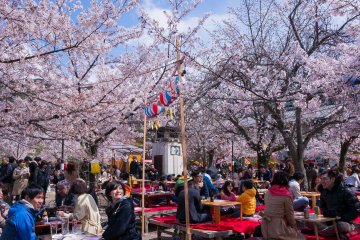
Maruyama Park is the oldest public park in Kyoto and a popular springtime cherry blossom viewing spot. It opened in 1886 and is located next to Yasaka Shrine in Higashiyama District. The park was laid out by the well-known gardening expert Ogawa Jibee (1860–1933). As it is one of the most popular places for hanami in Kyoto, it can get quite crowded during the high season in April. The main attraction of the park is a beautiful weeping cherry that is illuminated at night. In the southwest of the park is the Chorakukan Villa, which the Japanese tobacco king Murai Kichibee had built. This property is now used as a hotel.
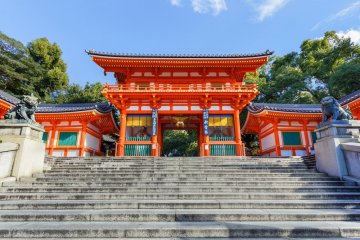
The Yasaka Cry, located in the Gion district in Kyoto, is often referred to as the Gion Shrine. The shrine is one of the most famous shrines in the city of Kyoto and is located at the end of Shijo-dori Street. The grounds of the shrine include several buildings and gates. Including the main hall and also a stage. Every year, Yakasa Shrine hosts numerous events and festivals that are important to the Japanese and is a popular destination for many visitors to Kyoto City. The Yasaka Shrine respects the gods Susanoo-no-mikoto, Kushiinadahime-no-mikoto, and Yahashira-no-mikogami. Above all, Susanoo-no-mikoto is an important god in Japanese mythology, known for his victory over Yamata-no-orochi (a great serpent with eight heads: a symbol of numerous disasters).
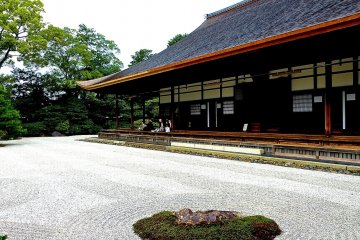
Kennin-ji is a historic Zen Buddhist temple in Higashiyama, Kyoto, Japan, near Gion, at the end of Hanami Lane. It is considered to be one of the so-called Kyoto Gozan or "five most important Zen temples of Kyoto". [Wikipedia]